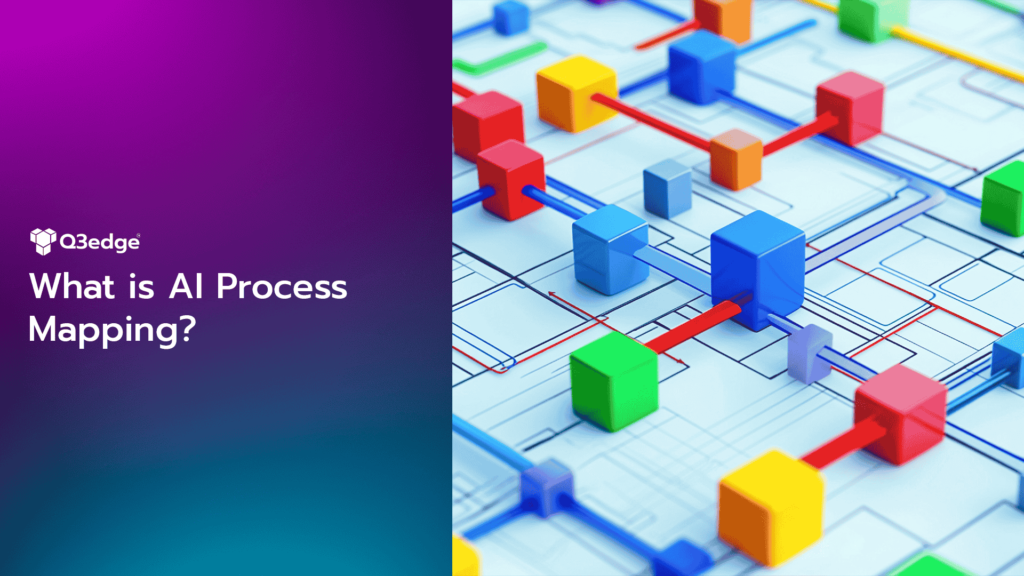What is AI Process Mapping and How Can It Transform Your Business?

AI process mapping is revolutionizing the way businesses optimize their workflows. By leveraging artificial intelligence, organizations can analyze and improve complex processes, leading to significant time and resource savings. This article explores the concept of AI process mapping, its benefits, implementation steps, and real-world applications.
What is AI Process Mapping?
AI process mapping refers to the use of artificial intelligence to create visual representations of business processes. These maps illustrate the sequence of activities, decision points, and interactions within a process. By integrating AI, these maps become dynamic tools that continuously update based on real-time data analysis.
Benefits of AI Process Mapping
- Time and Resource Savings: Automating the mapping process reduces the time spent on manual tasks, allowing teams to focus on higher-value activities.
- Improved Accuracy: AI algorithms can identify inefficiencies that human analysts might overlook, resulting in more precise process maps.
- Real-Time Insights: Continuous monitoring provides organizations with up-to-date information, enabling swift adaptations to changing conditions.
- Increased Efficiency: By pinpointing bottlenecks and areas for improvement, AI process mapping enhances overall productivity.
- Better Compliance: Real-time monitoring helps ensure adherence to regulatory requirements, minimizing the risk of fines.
How AI Process Mapping Works
The implementation of AI Business Process Mapping involves several key steps:
Step 1: Data Collection
Gather relevant data from various sources, including logs and transaction records. This foundational step is crucial for accurate analysis.
Step 2: Data Analysis
Utilize machine learning algorithms to analyze the collected data and identify patterns or inefficiencies within the processes.
Step 3: Mapping
Create visual representations of the identified processes, highlighting areas for improvement.
Step 4: Optimization
Streamline workflows by automating certain steps and removing redundancies based on insights from the mapping phase.
Step 5: Monitoring
Continuously track key performance indicators to ensure ongoing efficiency and effectiveness of the processes.
Real-World Applications of AI Process Mapping
AI process mapping has diverse applications across various industries:
- Healthcare: Improving patient record management and appointment scheduling.
- Manufacturing: Enhancing inventory management and quality control processes.
- Finance: Streamlining loan approvals and fraud detection.
- Customer Service: Optimizing ticketing systems and chatbots for better customer interactions.
Challenges in Implementing AI Process Mapping
While AI-driven process mapping offers numerous benefits, businesses may encounter challenges such as:
- Data Quality: Ensuring that data used in mapping is accurate and relevant.
- Technical Expertise: The need for specialized skills to implement AI solutions effectively.
- Integration Issues: Aligning new tools with existing systems can be complex.
- Resistance to Change: Employees may be hesitant to adopt new technologies.
- Cost Considerations: Implementing AI solutions can require significant investment.
Overcoming Challenges
To successfully implement AI-driven process mapping, organizations can:
- Prioritize Data Quality: Invest in data governance practices to ensure accuracy.
- Invest in Technical Expertise: Hire specialists or train existing staff in relevant technologies.
- Address Integration Challenges Early On: Evaluate compatibility with current systems during planning.
- Engage Employees: Involve team members in the implementation process to foster buy-in.
- Budget Wisely: Plan budgets carefully to ensure a good return on investment.
Conclusion
Artificial intelligence process mapping is a powerful tool that can significantly enhance business operations by improving efficiency, accuracy, and adaptability. By addressing potential challenges proactively, organizations can leverage this technology to stay competitive in an ever-evolving market landscape.
